Related Research Articles
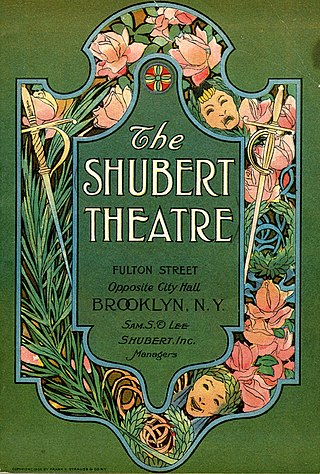
The Shubert Organization is a theatrical producing organization and a major owner of theatres based in Manhattan, New York City. It was founded by the three Shubert brothers — Lee, Sam, and Jacob J. Shubert — in the late 19th century. They steadily expanded, owning many theaters in New York and across the United States. Since then it has gone through changes of ownership, but it is still a major theater chain.
Union Grounds was a baseball park located in the Williamsburg section of Brooklyn, New York. The grounds opened in 1862, its inaugural match being played on May 15. It was the first baseball park enclosed entirely by a fence, thereby allowing proprietor William Cammeyer or his tenant to charge admission. This permitted paying customers to watch the games from benches in a stand while non-paying spectators could only watch from embankments outside the grounds.

The Paramount Theatre was a 3,664-seat movie palace located at 43rd Street and Broadway on Times Square in Midtown Manhattan, New York City. Opened in 1926, it was a showcase theatre and the New York headquarters of Paramount Pictures. Adolph Zukor, founder of Paramount predecessor Famous Players Film Company, maintained an office in the building until his death in 1976. The Paramount Theatre eventually became a popular live performance venue. The theater was closed in 1964 and its space converted to office and retail use. The tower which housed it, known as the Paramount Building at 1501 Broadway, is in commercial use as an office building and is still home to Paramount Pictures offices.

The Casino Theatre was a Broadway theatre located at 1404 Broadway and West 39th Street in New York City. Built in 1882, it was a leading presenter of mostly musicals and operettas until it closed in 1930.

Pike's Opera House, later renamed the Grand Opera House, was a theater in New York City on the northwest corner of 8th Avenue and 23rd Street, in the Chelsea neighborhood of Manhattan. It was constructed in 1868, at a cost of a million dollars, for distiller and entrepreneur Samuel N. Pike (1822–1872) of Cincinnati. The building survived in altered form until 1960 as an RKO movie theater, after which it was replaced by part of Penn South, an urban renewal housing development.
Main Street is a major north–south thoroughfare in Los Angeles, California. It serves as the east–west postal divider for the city and the county as well.
The Garfield Building was located at 26 Court Street, at Remsen Street, in Brooklyn, New York. It was built by contractor William Lamb, who was originally from Glasgow, Scotland. Together with his brother Thomas, the builders began their careers with the firm W&T Lamb, starting in 1861. The seven-story Garfield Building was offered in an auction by the Brooklyn Real Estate Exchange in January 1906. The lot covered 100 feet by 150 feet on Remsen Street. It was near Borough Hall, the court house, Temple Bar, Hall of Records, the borough's first subway station, and the heart of the financial center.
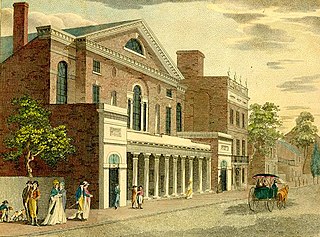
The Chestnut Street Theatre in Philadelphia, Pennsylvania was the first theater in the United States built by entrepreneurs solely as a venue for paying audiences.

Eugene De Rosa was an Italian American architect, called at birth Eugenio. He worked in New York City and specialized in the design of theatres.
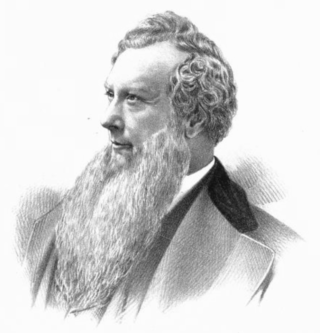
Richard Martin Hooley was an American theatre manager, minstrelsy manager, and one of the earliest theatre managers in Chicago. Hooley was born in Ballina, County Mayo, Ireland, and educated in Manchester before first coming to the United States in 1844. After being associated for two years with Christy's Minstrels, he organized a blackface minstrel company and toured England, returning to the United States by 1853. In 1855 he traveled to California and took over the management of Maguire's Opera House in San Francisco.
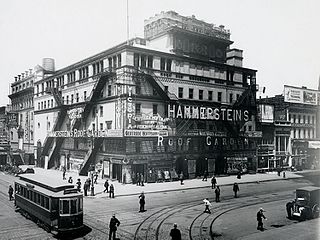
The Victoria Theatre was a prominent American vaudeville house during the early years of the twentieth century. Theatre mogul Oscar Hammerstein I opened it in 1899 on the northwest corner of Seventh Avenue and 42nd Street, along New York City's Longacre Square. The theatre was closely associated with the Paradise Roof Garden above it, and the two venues came to be known collectively as Hammerstein's. The Victoria closed in 1915.
The Colonial Theatre in New York City was at Broadway and 62nd Street in what was then the San Juan Hill neighborhood on the Upper West Side, Manhattan. Originally named the Colonial Music Hall, it was opened in 1905 by Frederic Thompson and Elmer "Skip" Dundy. Designed by George Keister, the theater had a seating capacity of 1,293.

Browne's Chop House was a New York City restaurant that was popular with the theatrical crowd. It closed in 1925.

Harlem Opera House was an opera house located at 211 West 125th Street, in the Harlem neighborhood of Manhattan in New York City, New York, U.S. Designed by architect John B. McElfatrick, it was built in 1889 by Oscar Hammerstein; it was his first theater in the city.

Albemarle Hotel was located at 1101 Broadway in the Flatiron District of Manhattan, New York City. Built in 1860 and overlooking Madison Square, it was one of the largest hotels on the avenue in its day.
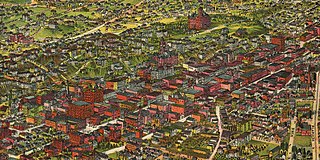
The late-Victorian-era Downtown of Los Angeles in 1880 was centered at the southern end of the Los Angeles Plaza area, and over the next two decades, it extended south and west along Main Street, Spring Street, and Broadway towards Third Street. Most of the 19th-century buildings no longer exist, surviving only in the Plaza area or south of Second Street. The rest were demolished to make way for the Civic Center district with City Hall, numerous courthouses, and other municipal, county, state and federal buildings, and Times Mirror Square. This article covers that area, between the Plaza, 3rd St., Los Angeles St., and Broadway, during the period 1880 through the period of demolition (1920s–1950s).
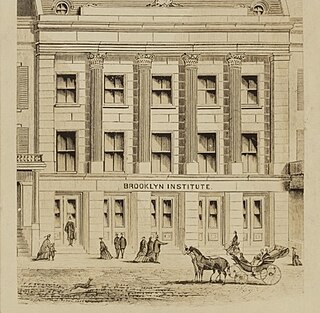
The Brooklyn Lyceum was the name of both a non-profit organization in Brooklyn, New York that was active from 1833 through 1843, and the structure which housed that institution. The building Brooklyn Lyceum, located at 182-184 Washington Street, was built in 1835. In 1841 the Brooklyn Apprentices' Library, the first free library in Brooklyn, moved into the building, and the two organizations shared the building until they merged to form the Brooklyn Institute in 1843. The building continued to be known as the Brooklyn Lyceum for two more years until the Brooklyn Lyceum building was purchased in 1845 by Augustus Graham and donated to the Brooklyn Institute at which point the building became known by that name. During its history, the building housed several organizations, often simultaneously, including the Brooklyn City Library, the Brooklyn Institute Free Library, the Youth's Free Library, and The Hamiltonians. The building remained the home of the Brooklyn Institute until it was destroyed by fire in 1890.

Olympic Theatre was the name of five former 19th and early 20th-century theatres on Broadway in Manhattan and in Brooklyn, New York.

The Bijou Theatre was a former Broadway theater in New York City that opened in 1878 as Theatre Brighton and was demolished in 1915. It also served as an opera house and silent movie venue throughout its history.

The A. I. Namm & Son Department Store is a commercial structure at 450–458 Fulton Street, at the southeast corner with Hoyt Street, in the Downtown Brooklyn neighborhood of New York City, United States. It is the last remaining structure of a complex of buildings constructed for the A. I. Namm & Son Department Store chain. The current structure, built in 1924–1925 and expanded in 1928–1929, is eight stories tall and was designed by Robert D. Kohn and Charles Butler in the Art Deco style. It is a New York City designated landmark.
References
Citations
- 1 2 3 4 5 Del Valle, p. 184
- 1 2 3 4 Suzanne Spellen (September 22, 2015). "Past and Present: Downtown Brooklyn's Grand Opera House". Brownstoner.
- 1 2 3 Harrison, p. 21
- ↑ "Benjamin Lewis". The Standard Union . January 20, 1905. p. 2.
- ↑ Del Valle, p. 185
- ↑ "Opening of the Grand Opera House". The Brooklyn Union . November 12, 1881. p. 3.
- ↑ Del Valle, p. 186-187
Bibliography
- Gabriel Harrison (1884). "The Grand Opera House". In H. R. Stiles (ed.). A History of the Progress of the Drama, Music and the Fine Arts in the City of Brooklyn. W. W. Munsell & Co.
- Cezar Del Valle (2010). "Grand Opera House". The Brooklyn Theatre Index, Volume I: Adams Street to Lorimer Street. Theatre Talks, LLC. ISBN 9780982772409.